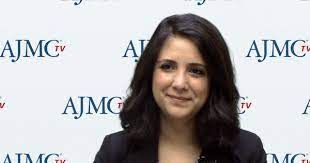- Bone Health
- Immunology
- Hematology
- Respiratory
- Dermatology
- Diabetes
- Gastroenterology
- Neurology
- Oncology
- Ophthalmology
- Rare Disease
- Rheumatology
2021 Was an "Inflection Year" for Biosimilars
The year 2021 brought several firsts in biosimilars and set the stage for expansion across therapeutic areas including diabetes and ophthalmology.
Editor's note: After the writing of this story, the FDA approved another biosimilar, an insulin glargine product from Eli Lilly called Rezvoglar.
Technically, the FDA has approved just 2 biosimilars in 2021, a substandard performance compared with recent years (for example, 10 biosimilars in 2019 and 3 biosimilars in 2020).
Headline readers might say, “Hold on! Weren’t there 4 approvals in 2021, including 1 this week?” Yes and no.

This week, the FDA approved the adalimumab biosimilar Yusimry, which became the seventh adalimumab biosimilar that won’t enter the marketplace until 2023. Still, it’s not the FDA’s business to actually get biosimilars onto market.
In September, the FDA approved a ranibizumab biosimilar (Byooviz), which constituted the first ophthalmology biosimilar and a new category of therapeutics for biosimilars at that. That was clearly a new biosimilar approval, too. (Byooviz will launch in mid-2022.)
In October, the FDA also approved Cyltezo (adalimumab) as an interchangeable biosimilar, but Cyltezo was actually approved in August 2017 as a regular biosimilar, and the interchangeable designation merely represents a license for pharmacists to dispense the biosimilar instead of the reference product (Humira) without having to first consult the prescribing physician. So, not a new biosimilar approval.
That’s 2 and 1.
In July 2021, the FDA also approved another drug as a biosimilar and an interchangeable (Semglee, insulin glargine), but this drug was previously approved (June 2020) under the 505(b)(2) new drug application regulatory pathway. So, it went from being a “new drug” to a biosimilar of a reference brand. The reclassification was thought by its maker, Viatris, to improve its marketability.
Although not a fresh biosimilar approval, that shift in status did mean that an insulin product became a biosimilar product for the first time; and, these Cyltezo and Semglee approvals were firsts in that there weren’t any interchangeables before. Regardless of their status, these agents have tremendous potential for lowering costs for patients and improving access.
The FDA's Biosimilar Accomplishments
The FDA did other things related to biosimilars, though. It moved further along a round of biosimilar user fee reauthorization, potentially bringing fees for biosimilar applications up to date and improving the resources at the FDA’s disposal for developing the biosimilar program.
It initiated a guidance development program for interchangeable biosimilars, with the purpose of clarifying how this designation will be used and interpreted going forward. This is a relief to manufacturers who anticipated much confusion as the interchangeable designation becomes more commonplace.
It also issued final guidance for its Biosimilars Action Plan for a more efficient and predictable biosimilar development and review process.
Last but not least, the FDA reached out to the US Patent and Trademark Office (USPTO) with an offer to help it sort through patent applications to weed out the ones that are of little merit. One big problem in the biologics marketplace is the proliferation of patents that often appear to have been filed solely to block attempts by competitors to bring biosimilars to market. The FDA’s offer of assistance constitutes an effort to help the USPTO improve the “quality” of patents.
Reflections on 2021
All these things add up to both a disappointing year for biosimilar approvals and a positive year for policy improvements, said Sarfaraz K. Niazi, PhD, a biosimilars entrepreneur and biopharmaceuticals consultant and adjunct professor who also serves on the Advisory Board of The Center for Biosimilars®.
“On the regulatory side, the FDA has issued addendums to its guidelines, along with question-and-answer sessions, that provide more clarity for biosimilar developers,” he said.
This clarification includes the possibility that developers may count on less costly and less wasteful methods of biosimilar development and evaluation, he said, noting that the FDA has indicated that biosimilar developers may be allowed to use reference product samples for testing that have been sourced in the European Union rather than in the United States.
“I also foresee that the FDA and European Union will develop guidance to the effect that there is no longer any requirement for animal studies and likely more concessions on the requirements for clinical efficacy testing,” he added. Both types of tests have been considered imprecise tools in the biosimilar development armamentarium and often of no value at all compared with other available tools. “So far, the FDA has licensed a couple of products without efficacy testing, and I see more such exemptions happening,” Niazi said.
He also anticipates a “significant revision” of regulatory guidelines that will facilitate the US marketplace entry of smaller biosimilar companies “that is essential to ensure that biosimilars meet the expectation of value to patients.” Mylan, an Indian company that became Viatris through a merger in 2020, is one such example of this, he said.
An "Inflection Year"
The biosimilar pipeline going forward includes various types of potential insulin products, immunosuppressants, and bone health and growth hormone products. That combined with some of the pivotal events described above makes 2021 an “inflection year” for biosimilars, according to Sonia T. Oskouei, PharmD, BCMAS, DPLA, vice president of Biosimilars for Cardinal Health and an Advisory Board member for The Center for Biosimilars®.
“The next year will bring more promise and opportunities of biosimilars to an expanded patient population across multiple therapeutic areas including diabetes and ophthalmology,” she said. “For example, following the approval and launch of the first interchangeable biosimilar for Lantus, we will now be able to witness how pharmacy benefit biosimilars will perform in the market, and understand drivers influencing adoption patterns.”
The year ahead will provide valuable insight into how well the interchangeable designation works to make biosimilars accessible to patients with diabetes, Oskouei said.
Although an insulin glargine (long acting) biosimilar was approved in 2021, the coming year is expected to see the approval of a short-acting interchangeable insulin biosimilar (insulin aspart), she said.
Also, the approval of a ranibizumab biosimilar in 2021 represents a landmark development for patients with age-related macular degeneration, with the potential to significantly reduce the financial and treatment burden associated with retinal conditions.
“2022 is particularly exciting for ophthalmology, given that in parallel to the market entrance of biosimilars, we will also see market entrance of innovative treatment options (including the impact of the recently approval Susvimo, a novel port delivery system with ranibizumab, on the market),” Oskouei said. She noted that getting Byooviz into circulation will depend heavily on patient and physician education efforts, payer coverage, and the availability of supportive clinical data.
The Market Is Growing
There’s more work to be done to get biosimilars into wider circulation, but the underlying message is one of hope for patients “across immunology, oncology, gastroenterology, endocrinology, and other underserved therapy areas,” said Brian Lehman, MBA, MHA, RPh, director of Patient Advocacy and Strategic Alliances for Sandoz and an Advisory Board member for The Center for Biosimilars®. “I’m hopeful that the availability of additional biosimilars will help millions of patients,” he said.
He also said self-insured employers are showing a stronger interest in the savings afforded by biosimilars. “Considering that millions of Americans receive health coverage through their employer, employers have a vested interest in finding solutions to curb health care spending, reducing monthly premiums and out-of-pocket costs for employees.”
Newsletter
Where clinical, regulatory, and economic perspectives converge—sign up for Center for Biosimilars® emails to get expert insights on emerging treatment paradigms, biosimilar policy, and real-world outcomes that shape patient care.



